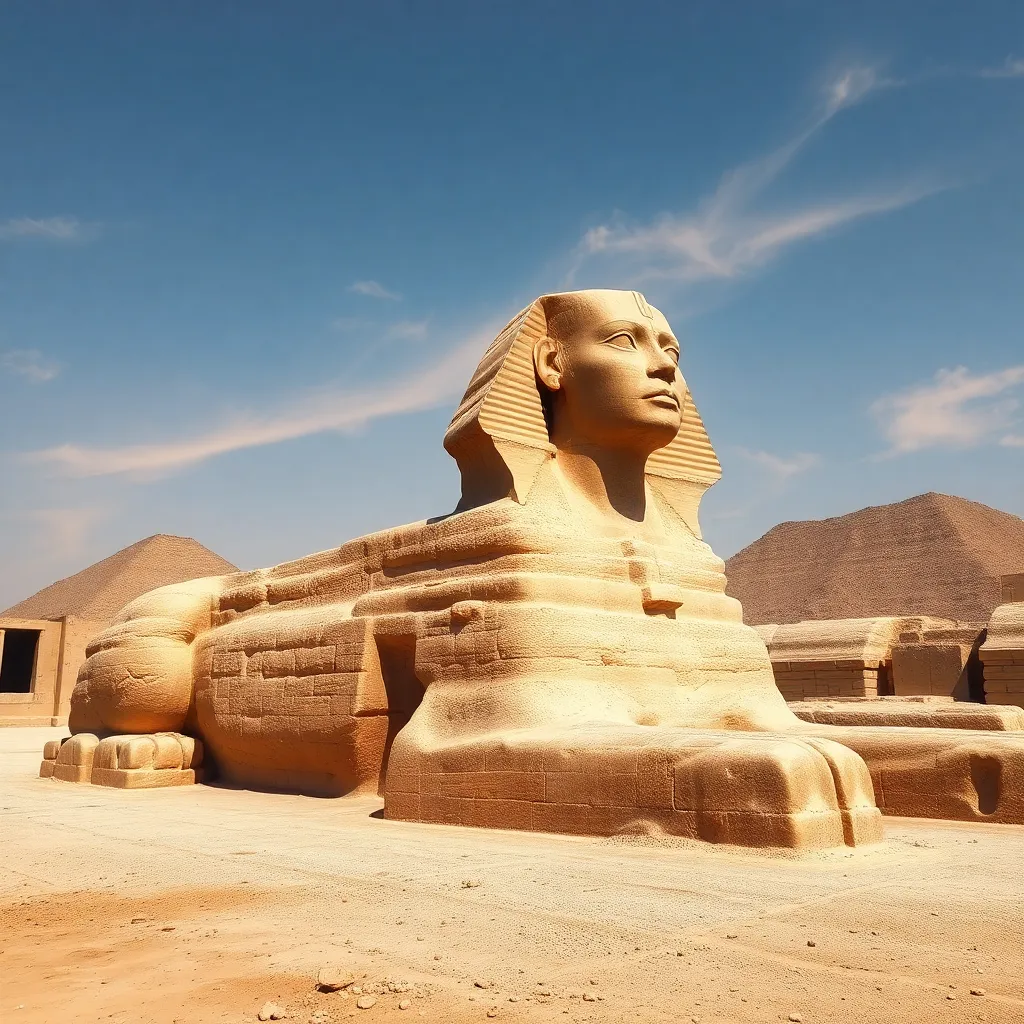The Riddle of the Sphinx: What Lies Behind Its Mystery?
I. Introduction
The Great Sphinx of Giza, an awe-inspiring monument with the body of a lion and the head of a pharaoh, holds a significant place in ancient Egyptian culture. This colossal structure, carved from limestone, has stood the test of time, witnessing the rise and fall of civilizations. Its grandeur is not just in its size but also in the mysteries it embodies.
At the heart of the Sphinx’s allure lies a riddle, famously associated with the myth of Oedipus. This riddle has captivated minds for centuries, serving as a test of wit and wisdom. Understanding the riddle and its context provides insight into the cultural fabric of ancient Egypt.
This article aims to delve into the mysteries surrounding the Sphinx and its riddle, exploring its historical significance, interpretations, and the ongoing fascination it inspires.
II. The Historical Context of the Sphinx
The origins of the Sphinx can be traced back to the reign of Pharaoh Khafre around 2500 BCE. It is believed that the Sphinx was constructed during the same period as the Great Pyramids of Giza, serving as a sentinel to the burial site of the pharaoh.
In relation to the Great Pyramids, the Sphinx is located on the Giza Plateau, aligned with the Pyramids. The Sphinx is thought to represent the pharaoh’s power, providing a connection between the divine and the earthly realms.
In ancient Egyptian mythology and religion, the Sphinx was considered a guardian of sacred spaces. It symbolizes strength, wisdom, and protection, embodying the pharaoh’s role as both a ruler and a deity.
III. The Riddle of the Sphinx
The riddle famously posed by the Sphinx is: “What walks on four legs in the morning, two legs at noon, and three legs in the evening?” This riddle encapsulates the stages of human life and serves as a metaphor for growth and change.
The mythological narrative involving Oedipus adds depth to the riddle. In Greek lore, Oedipus encounters the Sphinx on his journey to Thebes. Unable to answer the riddle, travelers fell victim to the Sphinx, who devoured them. Oedipus, however, successfully unraveled the riddle’s meaning, identifying the answer as “man.” This act not only saved his life but also led to the Sphinx’s demise.
Riddles held a significant place in ancient societies, often representing wisdom, intelligence, and the pursuit of knowledge. They were used as tools for teaching and storytelling, reflecting cultural values and beliefs.
IV. Interpretations of the Riddle
The answer to the Sphinx’s riddle, “man,” can be interpreted in various ways:
- Stages of Life: The riddle symbolizes the journey of a human from infancy (crawling on four legs) to adulthood (walking on two legs) and old age (using a cane as a third leg).
- Human Nature: It reflects the complexity of human existence, emphasizing the transitions and challenges faced throughout life.
- Philosophical Implications: The riddle invites contemplation about the essence of humanity, prompting discussions on identity, purpose, and mortality.
V. Theories Surrounding the Sphinx’s Purpose
Numerous theories exist regarding the purpose of the Sphinx, each contributing to its enigmatic legacy:
- Guardian or Protector: Many scholars believe the Sphinx served as a guardian of the Giza Plateau, protecting the pharaoh’s tomb and sacred sites from intrusion.
- Funerary Practices: Some theories suggest that the Sphinx played a role in funerary rituals, symbolizing the transition of the deceased into the afterlife.
- Symbol of Power: The Sphinx may also represent the pharaoh’s power and authority, embodying the divine connection between the ruler and the gods.
VI. Archaeological Discoveries and Their Impact
Over the years, significant archaeological discoveries have shed light on the Sphinx and its historical context:
- Excavations: Excavations around the Sphinx have uncovered various artifacts and structures, providing insights into the construction techniques and the society that built it.
- Reshaping Understanding: Discoveries have challenged previous assumptions about the Sphinx’s age and purpose, leading to new interpretations of its significance.
- Ongoing Research: Archaeologists continue to study the Sphinx, employing advanced technologies to uncover hidden chambers and understand its construction better.
VII. The Sphinx in Popular Culture
The Sphinx has transcended its historical roots to become a symbol of mystery in modern culture:
- Literature: The Sphinx has been featured in countless literary works, symbolizing enigma and the quest for knowledge.
- Film: Movies often depict the Sphinx as a mystical guardian, adding layers of intrigue to its character.
- Art: Artists have drawn inspiration from the Sphinx, capturing its grandeur and mystery in various forms.
The influence of the riddle extends into modern storytelling and puzzles, highlighting humanity’s ongoing fascination with enigma and challenge.
VIII. Conclusion
The Great Sphinx of Giza, with its enduring mysteries and iconic riddle, continues to captivate scholars and enthusiasts alike. Its historical significance, cultural implications, and the myriad of interpretations surrounding its riddle offer a window into ancient Egyptian civilization.
As we explore these ancient enigmas, we gain valuable insights into human curiosity and the quest for knowledge. The Sphinx serves as a reminder of our intrinsic desire to seek understanding, pushing the boundaries of what we know and encouraging us to ponder the mysteries that lie beyond.




